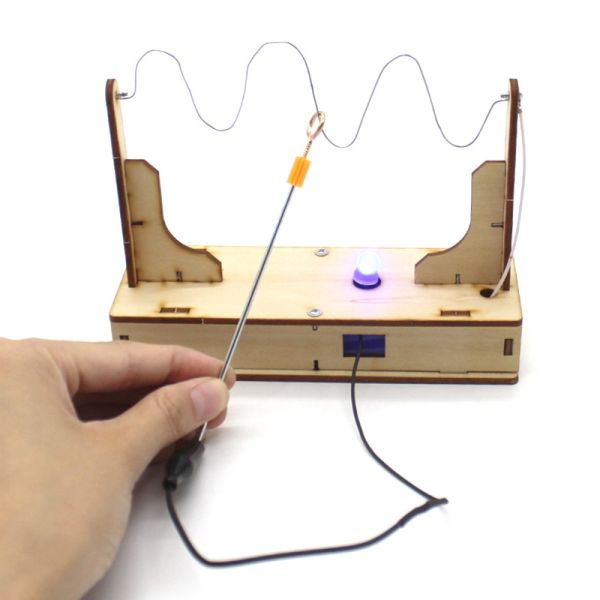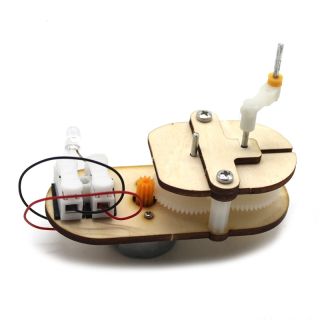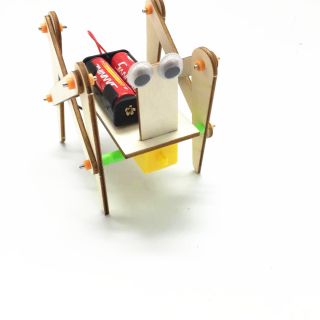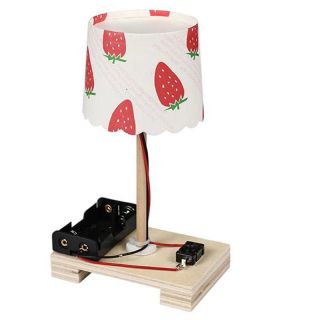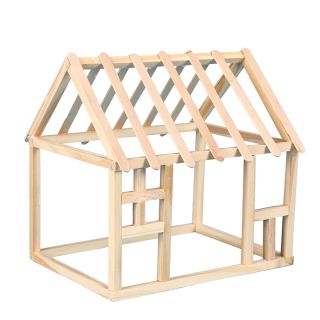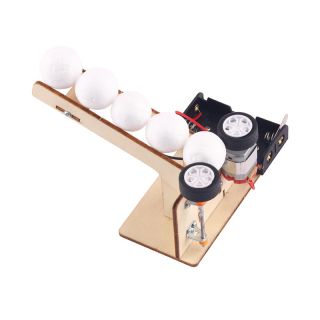All Categories
Cross Fire Demo Kit - Cat# 80-50-W140
In stock
SKU
80-50-W140
CA$12.20
- Buy 2 for CA$11.15 each and save 9%
- Buy 6 for CA$10.15 each and save 17%
Cross Fire Demo Kit — A Hands-On STEM Experience
Engage your students with an interactive kit that bridges circuits, conductivity, sound, and light. The Cross Fire Demo Kit is designed to let learners build a conductive path that triggers both an LED and a buzzer, helping them directly observe how circuits open and close, and how conductivity works.
What’s in the Kit & How It Works
This kit includes a metal “horn” nail mounted on a shaft, conductive iron wires, wiring, an LED, a buzzer, and supporting components. According to the product page, when the horn nail makes contact with a conductive wire, it completes the circuit: current flows, the LED lights up, and the buzzer sounds. When contact is broken, the circuit opens and both the LED and buzzer turn off.
This simple switching mechanism makes it easy for students to experiment with how contact, gaps, and material conductivity affect circuit behavior.
A Teacher Resource Guide is available via “Additional Resources.”
STEM Concepts Illuminated
| STEM Area | Key Concepts & Principles | Classroom Applications & Extensions |
|---|---|---|
Electricity & Circuits | Closed vs. open circuits, conductivity, switches | Students build and test the path; try inserting different materials (e.g. metals, wood, plastic) and see which complete the circuit |
Electronics | LED operation, current flow, buzzer activation | Observe how current flow powers both a light and a sound device; discuss component roles |
Materials & Conductivity | Conductors vs. insulators, contact resistance | Let students compare different metals or thicknesses; test how loose/tight connections affect behavior |
Engineering Design | Switch design, precision, durability | Challenge students to design more reliable contact mechanisms or to protect against failure |
Data & Experimentation | Circuit toggling, response time, repeatability | Students can time how quickly the LED/buzzer respond when contacts are made or broken; log multiple trials |
Why Teachers Will Appreciate It
Immediate Feedback: Students see and hear when a circuit is completed — it’s direct and intuitive.
Low Cost, High Impact: Affordable for class sets, with a clear hands-on demonstration of key circuit behavior.
Scalable Complexity: Younger students can focus on simply making and breaking connections; older students can test materials, resistance, contact pressure, etc.
Cross-Disciplinary: Bridges science (electricity, materials), engineering (switch design), and data practices.
Supports Inquiry & Iteration: Students can experiment, redesign, and observe outcomes over multiple trials.
Classroom Activity Ideas
Material Test: Provide strips of different materials (aluminum, copper, steel, plastic) and see which ones allow the LED and buzzer to activate.
Contact Pressure Experiment: Test how tight or loose connection affects whether the circuit completes.
Switch Design Challenge: Ask students to design a more robust or creative switch mechanism using the horn nail and wire setup.
Timing Trials: Record response delays between contact and light/sound; graph results over multiple trials.
Circuit Extension: Encourage students to expand by adding more LEDs or buzzers, or chain multiple Cross Fire kits to explore series vs parallel behavior.
With the Cross Fire Demo Kit, students don’t just read about conduction and circuits — they build, test, and hear/see them in action. Let them experiment with continuous contact, toggles, and materials to deepen their understanding of electricity.





